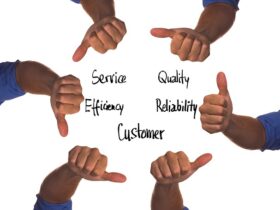The future of transportation and logistics is literally and figuratively the lifeblood of modern economies. Any product, from your smartphone to your groceries, travels in a sophisticated network until it reaches you. However, this no longer stands still, urged by innovation and the pressing need for efficiency, sustainability, and resilience.
Let’s dive in and see some of the exciting trends that shape transportation and logistics’ future and how they influence businesses, consumers, and the planet.
Why the Future of Logistics Matters
In trends, it is important first to understand why this transformation matters. Transportation and logistics are central to global trade. Efficient systems can keep costs down, speed delivery, and lower environmental impacts. However antiquated practices create bottlenecks that waste resources and boost emissions.
As more industries welcome new technologies, the transformation in how goods move worldwide will be a lot more intense to smarter, faster, and greener logistics.
Key Innovations in Transport and Logistics
From autonomous transporters to drone deliveries, the future is full of innovation. Some of the game-changers will be:
1. Autonomous Vehicles
Self-driving trucks and delivery vans are fast becoming a reality. These vehicles would use AI and sensors to keep them on the roads, resulting in fewer human drivers being required.
Benefits: Lower labor costs, reduced accidents, and 24/7 operation.
Example: Companies like Tesla and Waymo are testing autonomous freight trucks.
2. Drones for Last-Mile Delivery
Drones are revolutionizing the final leg of delivery. Just think of a small drone dropping your online order at your doorstep in minutes.
Benefits: Faster delivery, especially in rural or congested areas.
Example: Amazon Prime Air is already piloting drone delivery programs.
3. Electric and Hydrogen-Powered Vehicles
The push for sustainability is driving the adoption of electric and hydrogen vehicles into logistics fleets.
Benefits: Reduced carbon emissions and lower fuel costs.
Example: DHL is switching to electric delivery vans to reach net-zero emissions.
4. Smart Warehousing
The warehouses are becoming automated, with robots picking, packing, and sorting items.
Benefits: It assures higher efficiency, reduced errors, and quicker order fulfillment.
Example: Amazon’s fulfillment centers are deploying robots to handle most of the logistical work.
5. Blockchain Technology
Blockchain ensures that supply chains are transparent and secure. It provides real-time visibility into the location of goods to all parties involved.
Benefits: Fraud is prevented, accountability is improved, and payments are smoothened.
Example: TradeLens, the blockchain-powered shipping container tracker, was a joint project of Maersk and IBM.
Trends Shaping the Future of Logistics
The industry isn’t just innovating—it’s adapting to emerging trends. Here’s what’s shaping the future:
1. Sustainability: The logistics industry is responsible for a large share of global emissions. This has raised a lot of pressure from governments and companies for greener solutions.
Trend: Carbon-neutral shipping, renewable fuels, and electric vehicles are finding their feet.
2. E-Commerce Boom: The growth in e-commerce is changing how goods are moved around. Consumers want quicker, cheaper, and more reliable delivery.
Trend: Same-day delivery services and micro-fulfillment centers are on the increase.
3. Urbanization: With growing urbanization, logistics has to adapt to the constraints of crowded urban areas.
Trend: Growth in the use of urban distribution hubs and electric cargo bikes.
4. Big Data Analytics: Data is the new oil for logistics. Companies utilize analytics to predict demand, optimize routes, and reduce costs.
Trend: In supply chains, real-time tracking, and AI-driven decision-making.
Challenges to Overcome
While the outlook is promising, challenges will be faced. These include:
- High Initial Costs: New technologies such as drones and autonomous vehicles are costly to implement.
- Regulatory Barriers: Governments must draft policies regarding innovations like the delivery of goods by drones or self-driving trucks.
- Job Loss: Automation could very well result in job losses in traditional roles.
- Cybersecurity Risks: The increased reliance on digital systems puts supply chains in greater danger of cyberattacks.
A Personal Experience with Logistics Challenges
A few years ago, I ordered a special birthday gift for my nephew—a remote-controlled car he’d been eyeing for months. But despite ordering well in advance, the delivery was delayed due to logistical errors. It finally arrived days after his birthday, dampening the excitement.
This experience drove home how much difference efficient logistics made. With the innovations coming our way today, from real-time tracking to quicker last-mile delivery, disappointments like these are few. It’s exciting to see how much better these will become in the next couple of years.
Future Innovations: What’s Next?
Here’s what to expect in the next decade:
| Innovation | What It Means |
| Hyperloop Transportation | Ultra-fast cargo transit systems using vacuum tube technology. |
| AI-Driven Supply Chains | Predictive algorithms to automate and optimize the entire supply chain process. |
| Delivery Robots | Autonomous robots deliver packages on sidewalks and in buildings. |
| 3D Printing | On-demand manufacturing reduces the need for transporting finished goods. |
| Space Logistics | I am planning for supply chains to support industries in outer space exploration and habitation. |
The Role of Collaboration
The future of logistics is not just about technology but all about collaboration. Governments and businesses need to come into play, as does a provider of technology. So, it will unlock the power of these innovations with the use of shared infrastructure, public-private partnerships, and open data.
In conclusion, A promising future in transport and logistics is indeed, innovated by autonomous vehicles, drones, and AI. Meanwhile, new priorities are emerging with the changing trends of sustainability and the growth of e-commerce.
While challenges like cost and regulation persist, the opportunities far outweigh them. Whether you’re a business owner or a consumer, changes in this field will impact you in ways you can’t imagine.
Get ready for a future where logistics isn’t just about moving goods—it’s about moving forward.

































Leave a Review